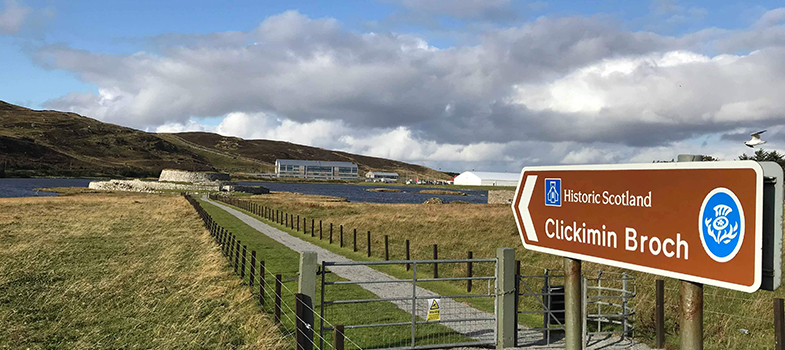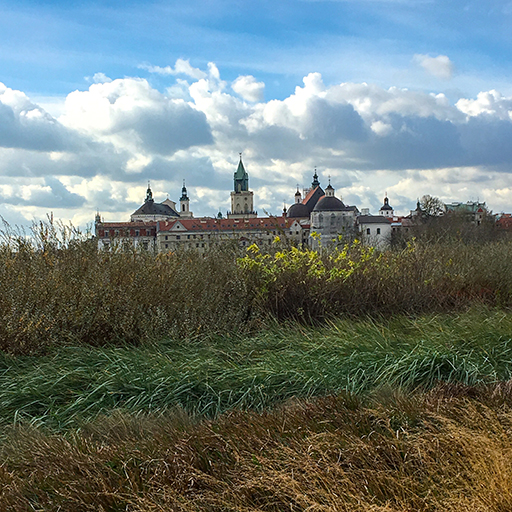16.3 Scots in Mainland Europe
Going back to Poland, where the merchants formed the Scottish Brotherhoods, associations of Freemasons, the records of one branch are preserved in The Green Book of Lublin [Tip: hold Ctrl and click a link to open it in a new tab. (Hide tip)] which reveals the gradual change in the community with the language switching between Scots and Polish.
Activity 6
Below is an example from The Book of the Scottish Brotherhood at Lublin (1680). This extract is an agreement, a contract, about the sale and ownership of specific jewellery (The Jagiellonian Library, Cracow. Ms 927, ff 2r-3v. Patrick Orem’s Testament, Lublin, 1609. On envelope: Laitter Will and Testament 7 July 1609).
Read the text and try to establish one word for the key item in question in the text that is Polish rather than Scots. Use your knowledge of the older Scots you have come across so far, also that in activity 4, to complete this task.Use the highlighter pen to mark the word in the text and then check your answer.
Discussion
The word you should have found or identified as different from Scots is:
- Snoure – Polish today spelled sznur, meaning string, thread, or band
You could have found this through a process of elimination, by looking up words you were not familiar with in the DSL and then checking whether these, or variations of these were listed there.
Please note that Kalakucz refers to a place in Nigeria, Africa, where the pearls were found.
There remains a cultural echo of the period when Jewish and Scottish communities in the Lithuanian city of Kèdainiai socialised together. In 1901, the folklorists Ginzburg and Marek collected a Jewish song called ‘I came to my stall’ sung by a woman called Fraida Heisel. Puzzled by its non-Jewish theme, detailed musical detective work ensued and eventually it was realised that what had been collected was a Yiddish version of an old Scots song, ‘Hame Cam oor Gudeman at E’en’. Primary school bairns in the area are now taught to sing the original song in Scots, as part of their awareness of the strong Scottish cultural heritage of Kèdainiai.
Farther East in Russia, the courts of Peter the Great and Catherine the Great had a strong Scottish and Jacobite presence, and the Scots’ cultural influence gathered pace when the cult of Ossian and the novels and poetry of Scott and Burns were in vogue – Pushkin, for example, translated Scots ballads like ‘The Twa Corbies’. Lermontov himself was a descendant of a Scots soldier of Fortune from Fife, George Learmonth, and expressed his desire to see his ancestral homeland in his poetry. Two Scottish social institutions also took root in Russia – Freemasonry and a hellfire club called The Beggar’s Benison. Both used Scots in their rituals with the Benison celebrating the priapic motto:
May yer purse ne’er be toom
And yer horn aye in bloom
The English version being “May prick nor purse never fail you”!
In the Caucasus and Siberia there were also Scottish religious communities. The historian Paul Dukes told me a story from 19th century Siberia of a Scots traveller entering an orthodox church and being slightly scared when a huge man mountain of a priest with a long red beard bears down on him sprinkling Holy Water. Seeing his alarm, the priest says: “Dinnae fash yersel. It’s jist a puckle watter an’ll dae ye nae hairm!”
In France, Spain and Portugal most of the Scots language connections I have come across over the years have come through Scots songs relating to war and wine: songs of the Peninsular War “Twa Recruitin Sergeants” and “The Farfar Sojer”, songs of Jacobite exile “The Sun Rises Bright in France” and a version of ‘Auld Lang Syne’collected by Burns in praise of a waught or drink of Malaga wine, containing some of the most famous words in songs in the English language:
For auld lang syne my dear
For auld lang syne
Let’s hae a waught o Malaga
For Auld Lang Syne.
(Burns, 1788)
Of course, because of the Auld Alliance between Scotland and France there has been cultural interchange for many centuries. By the 16th century the auld alliance came under threat, as Scotland turned toward the Protestant Reformation and at the Chateau of Chenonceaux in the private chapel of Mary Queen of Scots, there are Scots biblical quotations ‘The reward of sin is daith’ and ‘The graice for sicht of God is peace and love in Jesu Christ our Lord’ carved on the wall by the dirks of La Garde Écossaise du Corps du Roi – the Scots Guard – a gesture showing their Protestant leanings and an early warning to Mary of what might await her in Scotland.
Activity 7
a.
Germany
b.
The Netherlands
c.
Belgium
d.
France
e.
Italy
f.
Spain
g.
Portugal
h.
Poland
i.
Bohemia
j.
Hungary
k.
Lithuania
l.
Latvia
m.
Austria
The correct answers are d, f, g, h and k.
Answer
Please note that although not all the countries were mentioned in this section, there were Scots who emigrated to these countries over the centuries. See the Further reading section of this unit where you can find resources that provide more information on this topic.
16.2 Scots in Scandinavia

